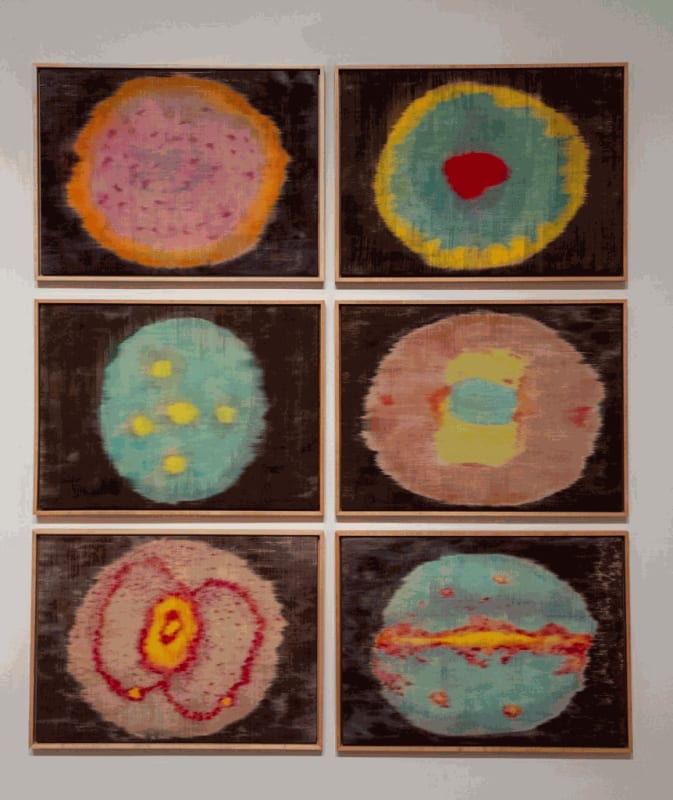I have been to a lot of places, some of them for substantial periods, lots of locations for a day or two, and in some instances for a matter of hours. Last month, I stayed a few weeks in Michigan, teaching drawing and attending very productive academic meetings. I went back to Brooklyn for a long weekend. I drove all the way to Toledo to see my friend’s show for one hour. What do I remember from all these trips? I wouldn’t say much, only snippets of information. We arrive at one destination and then move to the next. After seeing Hildur Ásgeirsdóttir Jónsson’s “Micro/Macro” exhibition at the Kent State University Museum, I realized we don’t experience time in seconds, minutes, hours or days. We experience time in fragments of our memories, and these bits are always shifting.
In this show, more than thirty textile works are presented. The paintings, as the artist calls them, do not follow any dimensional standards. The viewer can find artworks that are extremely large or relatively small. In most cases, the artist introduces landscapes of her native Iceland. Jónsson’s process begins with photographs that she takes while visiting her homeland. And even though some of the smaller tapestries eschew the regular landscapes in favor of celestial bodies, they are also based on photographs and the present figure-ground relationships still suggest landscapes.
Hildur Ásgeirsdóttir Jónsson, installation view of “Micro/Macro,” 2025, at Kent State University Museum. From left: “Core,” 2013; “Eruption,” 2015; “Rainbow Fragment #1,” 2018; “Blaskogaheiði 2,” 2007/Photo: Kent State University
The reason for our assumption that we are looking at something grander than the surface is the fact that we can recognize things from the natural environment. The work seems to honor nature since in Jónsson’s paintings only nature exists. The lack of any cityscapes or people is apparent. As time passes by, many things disappear, but nature doesn’t go anywhere. It is always there. Therefore, it appears in Jónsson’s work in an identifiable manner. However, the specific elements of nature are not concrete. They are fuzzy and dissolve in the moment of looking at the tapestries. This fuzziness of the images brings the uncertainty and ephemerality of the experience. Those instants function as constantly changing fragments of our memory. Accordingly, the work deals with the persistent experience of looking at something. The question becomes—what are we looking at? Is it the past or the present? Or is it the future that we create with our eyes?
Day after day, over and over we travel to places, we see, and we experience things. Then, we store some of these particles in our minds and keep going on. Some of the fragments we collect by taking photographs, so we don’t forget them. Landscapes with their vastness provide something unbound. But photographs produce specificity since they capture a specific moment in time. Because of this dialectical tension, the experience of Jónsson’s work is transitional. We are moving away from something and simultaneously arriving at some other destinations. Jónsson’s work is where the past, present and future connect concurrently. In these paintings, time, unlike memories, is unreal.
“Hildur Ásgeirsdóttir Jónsson: Micro/Macro” is on view at Kent State University Museum, 515 Hilltop Drive Kent, Ohio, through August 3.


